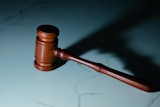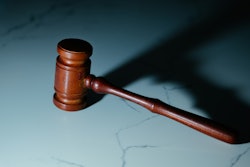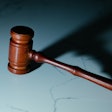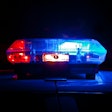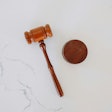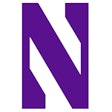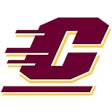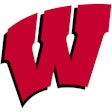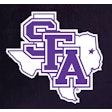![[Photo courtesy of StadiumDB.com]](https://img.athleticbusiness.com/files/base/abmedia/all/image/2018/10/ab.Legal918_feat.png?auto=format%2Ccompress&q=70&w=400)
Negligence lawsuits are quite common, particularly in the sports industry. Facility owner/operators are routinely sued by participants for injuries sustained while participating in a sport-related activity, or by spectators who incur harm at a sporting event.
 Kristi Schoepfer-Bochicchio is chair of the Physical Education, Sport and Human Performance Department at Winthrop University.
Kristi Schoepfer-Bochicchio is chair of the Physical Education, Sport and Human Performance Department at Winthrop University.
However, a negligence lawsuit filed by a professional athlete who has sustained an injury in a professional sports facility is far less common. In 2016, Reginald (Reggie) Bush filed a lawsuit against the St. Louis Regional Convention and Sports Complex Authority, as well as the St. Louis Convention & Visitors Commission, for injuries sustained during a St. Louis Rams game against Bush's San Francisco 49ers in November 2015 at the Edward Jones Dome in St. Louis. Bush later added the Rams to the lawsuit as an additional defendant.
At the time the game in question was played, the Edward Jones Dome's synthetic turf field was surrounded by an exposed surface referred to by Bush as the "concrete ring of death." During the game's first quarter, Bush returned a punt out of bounds. While trying to slow down at the conclusion of the play, Bush's momentum carried him off the turf surface and onto the concrete, where he incurred a season-ending tear of his left ACL. In his 2016 lawsuit, Bush alleged premises liability and negligence claims against the defendants.
Premises liability claim
Premises liability is an area of the law that allows for legal claims against premises owner/operators who are responsible for injuries sustained due to unsafe conditions at the premises in question. Specifically, premises owner/operators have a legal responsibility to provide a reasonably safe environment for all participants and/or spectators. Further, premises liability law classifies patrons and participants in various categories to further define the legal duty owed. Such categories include invitee, licensee, trespasser and recreational user.
An invitee to premises is a person who has an express or implied invitation; thus, premises owner/operators owe significant legal duties to invitees. Specifically, invitees are commonly owed a duty by the owner/operator to inspect, repair, warn of concealed danger, advise and keep safe.
Bush alleged that in the 2015 football game, he was classified as an invitee to the playing surface (as were all players, coaches, cheerleaders, etc.), and as such, the defendants had a legal duty to "remove or warn of dangerous conditions in the Dome and to maintain the Dome, including the playing surface and surrounding areas, in a reasonably safe condition."

Bush's lawsuit asserted that the defendants owned, operated, maintained, leased, controlled and possessed the Dome, including the playing surface and surrounding concrete. Moreover, Bush maintained that the defendants negligently permitted a dangerous condition to exist at the Dome, creating an unreasonable risk of harm to those invitees on the field.
Other factors that will impact whether a premises owner/operator is liable are 1) foreseeability and 2) notice (actual or constructive). Premises owner/operators have a duty to protect against reasonably foreseeable harms. However, there must be proof that the premises owner/operator had actual or constructive notice of the potential harm.
To substantiate both foreseeability and actual notice in his claim, Bush alleged that the defendants had direct knowledge of the dangerous condition, since Josh McCown, then quarterback for the Cleveland Browns, slipped on the same out-of-bounds concrete surface and sustained an injury to his shoulder during a game the previous week. Though McCown's was not a season-ending injury, as Bush's was, Bush maintained that the injury he sustained was foreseeable, and that the defendants had actual notice of the dangerous conditions presented by the concrete surface, based on like circumstances in previous NFL games at the Edward Jones Dome.
![[Photo courtesy of Twitter]](https://img.athleticbusiness.com/files/base/abmedia/all/image/2018/10/ab.Legal918_sm1.png?auto=format%2Ccompress&fit=max&q=70&w=400) [Photo courtesy of Twitter]
[Photo courtesy of Twitter]
Negligence claim
In addition to the premises liability claims, Bush asserted general negligence claims. Specifically, Bush maintained that the defendants had a duty of reasonable care that was breached by the design of the playing field, such that it was surrounded by a slippery concrete surface. The defendants failed both to cover the concrete surface with protective padding and to provide warnings related to the concrete surface. Bush alleged that these breaches of duty were the cause of his harm, and that he suffered actual damages, as well as pain and suffering to substantiate compensatory damages.
Additionally, Bush claimed that the defendants showed complete indifference and/or conscious disregard for his safety, thus justifying punitive damages to punish the defendants and deter like owner/operators from similar conduct in the future.
Jury trial
As the jury trial began, two of the three original defendants in the lawsuit were dismissed. Under Missouri law, a public entity can only be liable in cases of alleged premises liability injuries/negligence if the entity had "exclusive control" of the premises in question. The St. Louis Convention & Visitors Commission and the St. Louis Regional Convention and Sports Complex Authority (STLRSA) are public entities. As such, they successfully argued that because both the Rams and the NFL controlled the premises, or at minimum shared control of the premises, the Commission and the STLRSA should be dismissed from the case, leaving the Rams as the sole defendant. As noted earlier, the Rams were added as defendants to the case weeks after the initial filing, a decision that ultimately allowed the case to survive.
At trial, the jury heard the aforementioned arguments from Bush, as well as arguments from the Rams, who claimed they did take precautions to make the concrete area safer, such as installing carpet runners in the tunnels between the locker rooms and turf field.
More significantly, the Rams argued that Bush could have sustained the knee injury prior to the play in question. The Rams tried to defeat causation, a required burden of proof in the negligence claim, arguing that there was no proof the ACL tear was sustained when Bush slipped on the concrete surface. Specifically, the Rams attempted to portray Bush, who was drafted in 2006 by the New Orleans Saints, as a player with a long history of knee injuries in an attempt to dissuade the jury from reasonably believing that the slip and fall in the November 2015 game caused the ACL tear.
Nonetheless, the jury returned an award approaching $12.5 million: $4.95 million in compensatory damages and $7.5 million in punitive damages.
The compensatory damages are intended to cover Bush's lost wages, medical expenses, loss of future earnings, and pain and suffering. While Bush did sign a contract for the subsequent NFL season with the Buffalo Bills, he argued that his value in free agency was significantly decreased by the injury to his knee, and that the lost value should be considered as part of the damage award.
Regarding the punitive damages, the Rams have asserted there is no basis for such a high award amount, and plan to seek a new trial. The jury clearly felt persuaded that, as Bush claimed, the Rams showed complete indifference and/or conscious disregard to the unsafe conditions they created (or allowed to exist) at the Edward Jones Dome.
![[Photo courtesy of Twitter]](https://img.athleticbusiness.com/files/base/abmedia/all/image/2018/10/ab.Legal918_sm2.png?auto=format%2Ccompress&fit=max&q=70&w=400) [Photo courtesy of Twitter]
[Photo courtesy of Twitter]
Legal responsibility
While both this lawsuit and the jury award are surprising, the case serves as an example that no organization is immune from premises liability and legal responsibilities resulting from negligence. Premises liability law makes clear that premises owner/operators have a legal responsibility to maintain premises in a reasonably safe condition. This includes inspecting for damage and repairing said damage, warning patrons and participants of concealed dangers, advising patrons and participants of unsafe conditions or inherent risks associated with the premises, and keeping patrons and participants safe by providing a reasonably safe facility.
By showing indifference to the dangers presented by the exposed concrete surface surrounding the Edward Jones Dome's synthetic turf — in fact, failing to address them even after injury had been suffered as a result of the surface's existence — the Rams left themselves legally exposed and vulnerable to a jury sympathetic to Bush's claims of injury causation and resulting lost earning power.
This article originally appeared in the September 2018 issue of Athletic Business with the title "How bare concrete left the Rams exposed." Athletic Business is a free magazine for professionals in the athletic, fitness and recreation industry. Click here to subscribe.













